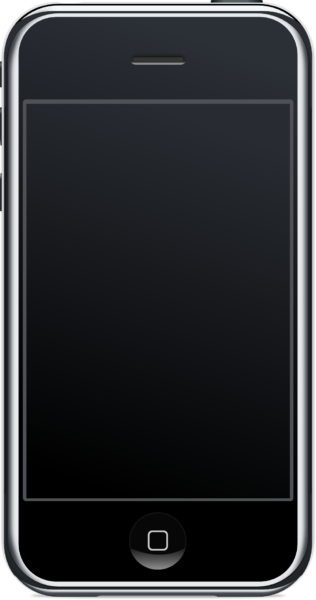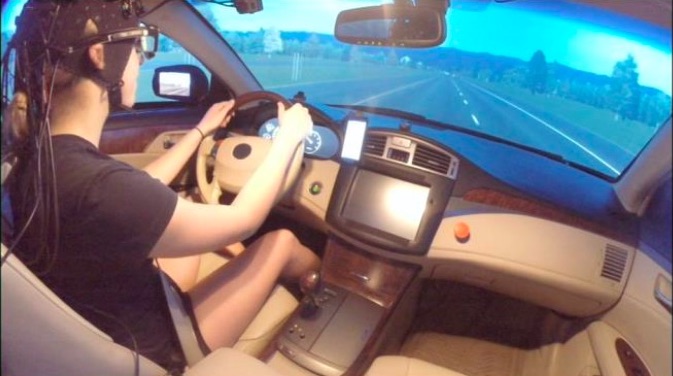Years ago, as psychiatrist Allan Reiss, MD, was bicycling on campus, his cellphone rang. He answered it and kept cycling, then a car in front of him stopped.
"I squeezed the hand brake with my only available hand, which was my left hand," he said. "Of course, that's the front tire of the bike. I went right over the top."
He landed on his head, escaping injury only because he was wearing a protective helmet. But it got him thinking about cellphones and distractions.
"It wasn't a near-death experience, but it could have been," he said. "It really drove home how attention is a finite resource."
Joining engineers at the Center for Automotive Research at Stanford, he and colleagues started designing studies to look at the effect of cellphone distractions on the brain. Their recent article, published in Scientific Reports, gives an illustration of what happens to your brain when you text and drive at the same time.
Their study confirms what previous research -- and common sense -- has told us: that if we interact with our cellphones in the car, the phones draw our attention from the job at hand. But they used an innovative method to record brain activity, functional near-infrared spectroscopy, which was able to demonstrate what happens in the brain.
"As you engage in more attention-grabbing activities, it shows in the prefrontal cortex and parietal cortex," said Joe Baker, PhD, an instructor in psychiatry and behavioral sciences who conducted the research with Reiss. The prefrontal cortex handles attention, memory and problem solving; the parietal cortex handles collection and processing of information as well as perspective.
"The attention's going away from the driving," Baker said.
'Very realistic' simulation
For the study, the researchers seated participants behind the wheel of a parked Toyota Avalon equipped with technology that simulated a drive, including images of what they would see through the windows as well as the rear-view and side mirrors.
"It's fully immersive and very realistic," Baker said.

After a test drive, five participants were sent home because they experienced nausea. (The simulation gives the impression that the car is moving even though it's staying put, a discrepancy that can lead to motion sickness.)
Researchers fitted the 21 remaining participants with an electrode-dotted cap so functional near-infrared spectroscopy could measure the concentration of blood in the brain.
The participants then "drove" a 30-minute course through city streets and along a highway. During that time, they interacted about 120 times with an iPhone that was mounted on the dashboard.
The researchers classified the interactions into five levels, from those requiring the least amount of attention to those requiring the most:
- Glancing at the phone to see a map of the course
- Looking at notices, such as "In 500 feet, turn left"
- Tapping a bar to view a message
- Reading texts like "How many siblings do you have?" and pressing a button to respond
- Answering questions such as "What's your favorite movie?" that necessitated removing the phone from the dashboard and typing
Attention overload
The researchers found that the more attention the iPhone demanded, the more blood headed to the participants' prefrontal cortex and parietal cortex. (The data was from 17 participants because four of the simulated drives had technical problems.)
"We know the prefrontal cortex and parts of the parietal cortex are explicitly involved in attention allocation," Reiss said. "It suggests attention overload."
The researchers also recorded the participants' steering wheel adjustments and pressure on the accelerator and brake: They found that drivers tended to ease up on driving movements while they were paying attention to the phone.
Although the researchers anticipated the findings, Reiss said, "It was really quite exciting to see the results" as the brain imaging confirms that cellphones are, indeed, a dangerous distraction.
None of the participants in the study "crashed," but Baker pointed out that in the simulator, the car doesn't drift the way cars that are traversing roads do. Without wind or embankments forcing constant adjustments, the simulated car stays the course when participants take their hands off the wheel.
"If we were to do this in a real car, they may actually have crashed," he said. During the simulation, "It was easy for the drivers to ignore the wheel for a second."
The researchers say they plan to run experiments that feature even more realistic driving situations, perhaps including simulated wind gusts or icy roads.
In the meantime, they hope that their brain-imaging study convinces drivers to avoid their cellphones and policymakers to regulate cellphone use and driving.
"We want people to be aware of the risk that this type of distraction creates for them," Reiss said. "They should think carefully about their behavior when they're in their car."
Photo of a study participant in a simulated drive test by Allan Reiss




